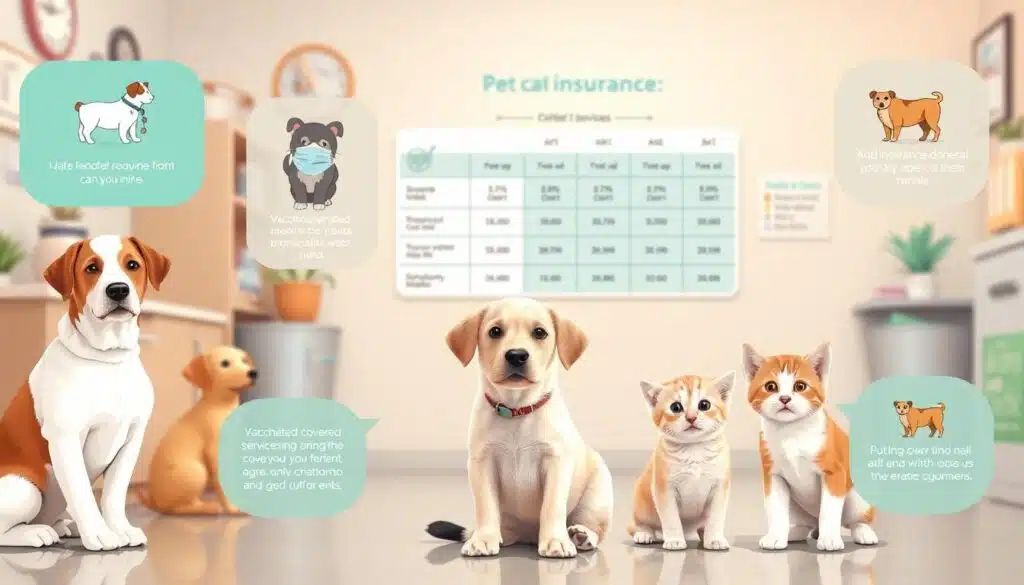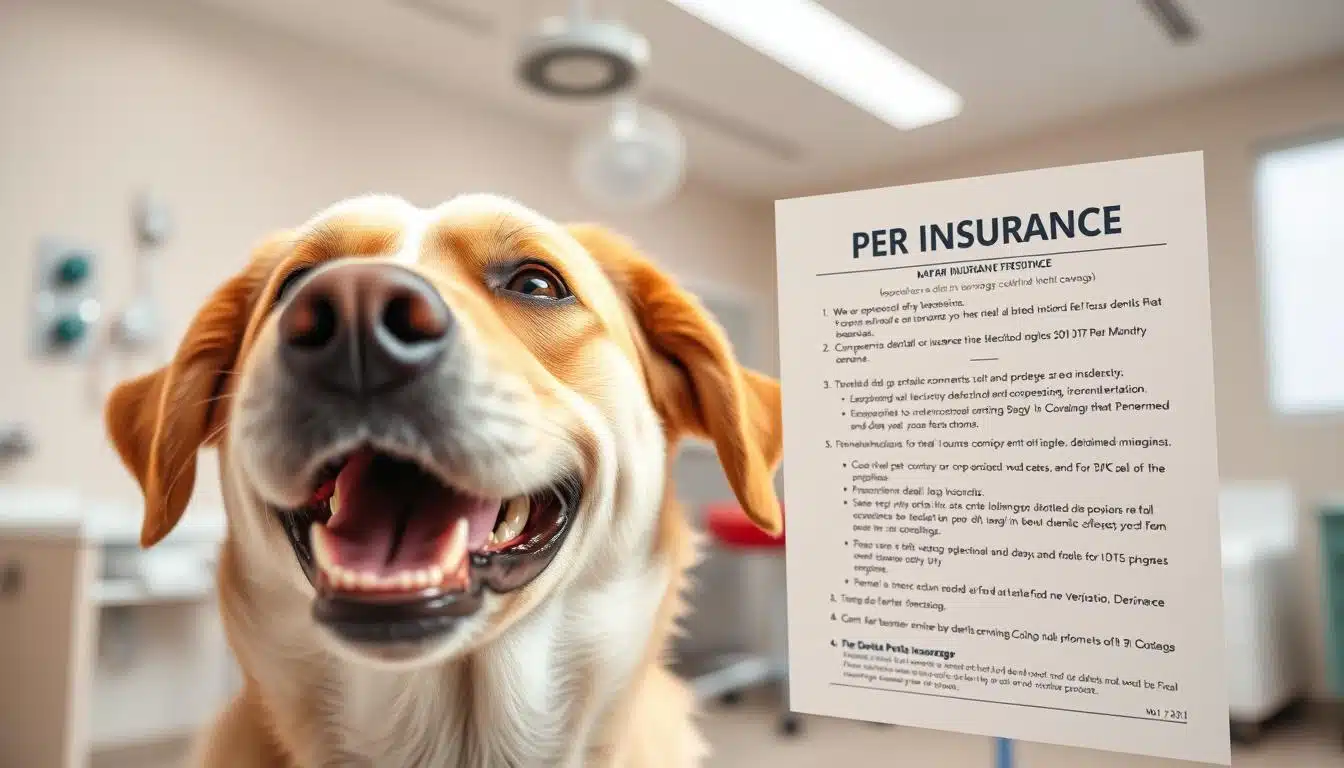If you’re struggling to afford vet care, you’re not alone — many pet owners face tough choices to keep their animals healthy. Recent estimates put U.S. pet ownership in the hundreds of millions (AVMA/APPA data); with so many pets and more families caring for them, veterinary costs create real financial stress for low-income households. While true free pet insurance for low-income families is rare, a mix of nonprofit grants, low-cost clinics, wellness plans, and targeted financial assistance can make care possible for many families.
Programs that provide pet insurance assistance, emergency grants, or reduced-cost services help lower the cost of necessary veterinary care. By learning about affordable pet insurance options and alternative supports, families can better protect their pets’ health without facing crippling bills. Read on to find realistic options, national nonprofits, and practical steps to get help now.
Table of Contents
ToggleKey Notes;
- While true free pet insurance is rare, nonprofit grants, low-cost clinics, and wellness plans can help low-income families cover veterinary care.
- Pet insurance and assistance programs can reduce out-of-pocket vet costs and protect your pet’s health.
- Many organizations offer financial assistance, emergency grants, and low-cost services—see the national and local resources below.
- Action: gather a vet estimate and proof of income, then apply to charities or compare affordable pet insurance options to find the best fit.
Understanding the Importance of Pet Insurance
Pet insurance and other supports are a vital tool to help keep pets healthy and to reduce unexpected veterinary care costs. For low-income families, even routine check-ups or a single emergency visit can force impossible choices — so knowing the options matters.
Only a small share of U.S. pets have commercial pet insurance (AVMA/APPA data); that leaves most owners paying out of pocket for veterinary care. Costs have risen over time — routine visits and diagnostics are more expensive than a decade ago — and without coverage many people postpone or skip care.
Coverage varies by plan, but most pet insurance products reimburse for a share of covered services (commonly 70–90% depending on the policy), after a deductible; most policies exclude pre‑existing conditions. In practice, financial assistance programs and nonprofit grants fill gaps where insurance isn’t available or affordable.
Challenges Faced by Low-Income Families with Pets
Low-income households face specific barriers to care: limited income, fewer nearby low-cost clinics, and competing household expenses. Those pressures lead to delayed care, unpaid bills, or surrendering pets when treatment is unaffordable. These are real, emotional decisions for people who love their animals.
Surveys and studies consistently show access gaps: many pets in lower‑income households receive little to no veterinary care each year, and households report affordability as a top barrier to seeking treatment. Emergency care can be especially costly and hard to access through low-cost programs.
Local resources — like humane society clinics, university veterinary hospitals that offer sliding-scale services, and regional nonprofit funds — can make a practical difference. Later sections list national organizations (RedRover, The Pet Fund, Brown Dog Foundation) and local clinic examples to help you find assistance in your area.
| Barrier | Statistics & notes |
| Pets receiving little or no veterinary care | Significant portion of low-income households—varies by study; update with local data |
| Households facing barriers to care | Commonly reported as a substantial minority in surveys (e.g., ~20–30%) — verify source |
| Owners who could keep pets with affordable care | Many say affordable options would prevent surrender; local figures vary |
| Pets requiring emergency care annually | Emergencies are common—prepare for sudden high costs with savings, insurance, or assistance |
What is Free Pet Insurance for Low-Income Families?
Note: true, ongoing commercial “free pet insurance” is uncommon. In practice, the term usually refers to targeted financial assistance—grants, emergency funds, or short-term programs—that help low-income families cover veterinary care costs.
These assistance programs are run by nonprofit organizations, charitable funds, and some clinics. Examples include RedRover Relief, The Pet Fund, Brown Dog Foundation, and local humane society programs—each has its own eligibility rules, award limits, and application process (see program pages for current details).
How Free Pet Insurance Works
Most support comes from dedicated funds and charity programs that pay vet bills directly or reimburse clinics. Unlike commercial pet insurance (which is reimbursement-based and ongoing), these grants are usually one-time or case-by-case awards that target emergencies, life‑threatening illnesses, or specific treatments.
When insurance or grants aren’t available, alternatives include deferred payment plans with your veterinarian, CareCredit (a consumer healthcare financing card—not insurance), charitable cost-share programs, and wellness plans that prepay routine care.
Eligibility Criteria for Free Pet Insurance
Programs generally require applicants to meet specific criteria such as household income thresholds, proof of ownership, and a veterinary estimate. Some programs prioritize emergencies, senior citizens, veterans, or patients with treatable conditions. Typical documentation requested includes a vet treatment estimate, proof of income (pay stubs or benefits letters), and medical records for the pet.
Micro-tip: before applying, gather a written vet estimate, photos, proof of residence/ownership, and any medical records to speed up review. Check each program’s website for up-to-date eligibility, application windows, and award amounts.
Affordable Pet Insurance Options for Low-Income Households
Finding affordable pet insurance and alternative supports is essential for low-income families who want to keep pets healthy without risking financial hardship. There are commercial low-cost plans, wellness-plan alternatives, and many nonprofit programs that help cover routine and emergency veterinary care.
Exploring Low-Cost Pet Insurance Alternatives
Affordable commercial options often include accident-only plans or basic accident + illness plans with higher deductibles and lower monthly premiums. Some well-known carriers offer entry-level plans that can run in the range of $15–$30/month for young, healthy pets (prices vary by state, species, and age). Trade-offs include higher out‑of‑pocket deductibles, lower annual limits, or exclusions for hereditary conditions.
Nonprofit funds and local programs also bridge gaps. For example, regional groups like NY SAVE and Rochester Hope for Pets provide emergency cost‑share or grants, while clinics such as SPCA Serving Erie County’s Lipsey Veterinary Clinic offer low-cost wellness exams and vaccines. Charitable funds (RedRover Relief, The Pet Fund, Onyx & Breezy Foundation, Help‑A‑Pet) focus on emergency o
When comparing low-cost plans, focus on these factors:
- Premiums: Lower monthly costs are appealing, but check what’s excluded.
- Deductibles and reimbursement: Higher deductibles lower premiums; reimbursement percentages (e.g., 70–90%) determine your final out‑of‑pocket.
- Annual or per-condition limits: Some low-cost plans cap payouts; know the maximums.
- Waiting periods and exclusions: Accident-only plans have limited scope; many policies exclude pre-existing or breed-specific conditions.
- Preventive vs. emergency coverage: Wellness plans prepay routine care (vaccines, exams) but usually don’t cover accidents or illnesses.
Tip: if budget is tight, consider pairing a low-cost accident policy with a wellness plan or a savings cushion for predictable preventive care.
| Organization / Option | What It Covers |
| Entry-level commercial plans | Accidents or limited accident+illness; $15–$30/mo typical for basic plans (varies) |
| Wellness plans (clinic-based) | Preventive care: exams, vaccinations, routine tests; monthly fee or annual payment |
| NY SAVE, Rochester Hope for Pets | Emergency funds / cost-share awards for serious illness or injury (apply; eligibility rules) |
| SPCA Lipsey Clinic (example) | Low-cost wellness exams, vaccines, basic preventives |
| RedRover Relief, The Pet Fund, Onyx & Breezy, Help‑A‑Pet | Grants for emergency or non-urgent specialty care; amounts and criteria vary |
Where to look locally: many humane societies, university veterinary teaching hospitals, and community clinics offer sliding‑scale services or wellness memberships. When you contact a program, ask about eligibility, required documentation, and whether awards are one-time or recurring.
If vet costs are a barrier, national and local organizations can provide financial assistance, grants, or low-cost services to help keep pets healthy. Below are reputable national programs and examples of local resources—check each organization’s website for current eligibility, application windows, and award amounts.
National Organizations Offering Pet Insurance Assistance
Key national nonprofits and their typical focus (visit each program page for details):
- RedRover Relief: Grants for urgent, life‑threatening veterinary care when economic hardship prevents treatment; typically requires a vet estimate and proof of income.
- The Pet Fund: Provides funding for non‑emergency, specialty medical care for companion animals; many applicants must document financial need and treatment plan.
- Paws 4 A Cure: Volunteer-run grants for families who can’t afford treatment for treatable conditions; eligibility varies by program cycle.
- Brown Dog Foundation: Regional grants for emergency and chronic-condition care; often partners with local clinics.
Local Resources for Financial Help with Pet Care
Local humane societies, municipal clinics, and community groups often offer sliding-scale fees, low-cost spay/neuter, or emergency assistance. Examples (confirm current services and locations):
| Organization | Location | Services Offered |
| Friends of Pets | Anchorage, Alaska | Emergency care assistance and low-cost spay/neuter |
| Mercy Crusade | Oxnard, California | Low-cost veterinary exams and basic services |
| Humane Society of the Boulder Valley | Boulder Valley, Colorado | Discounted medical care, spay/neuter programs |
| Connecticut Humane Society’s Fox Memorial Clinic | Newington, Connecticut | Veterinary care for people in financial need, low-cost services |
| Michigan Humane Society | Detroit, Rochester Hills, Westland | Multiple clinic services, wellness and discounted care |
| Brown Dog Foundation | Illinois, Iowa, Tennessee | Financial aid for emergencies and chronic conditions |
How to Find & Apply for Assistance
Practical steps to apply and improve your chances of getting help:
- Search locally: try “[your state/city] + humane society low-cost clinic” or call 2-1-1 for referrals to veterinary assistance programs in your area.
- Gather documentation: a written vet estimate, proof of income (pay stubs, benefits letters), proof of ownership, and any medical records for the pet.
- Contact your vet first: many clinics work with assistance programs, provide payment plans, or can recommend local grants.
- Check vet school clinics: university veterinary hospitals often run low-cost programs or teaching clinics with reduced fees.
- Apply to multiple programs: awards vary; apply to national funds and local charities and follow up promptly.
Note: program names, eligibility, and funding amounts change—always verify current information on the organization’s official site before applying.
Understanding the Basics of Pet Insurance Coverage

Understanding what basic pet insurance covers and cut-off age for pet insurance
Before choosing a plan, it helps to understand what pet insurance actually covers and how it differs from other ways to pay for veterinary care. Basic pet insurance typically helps with unexpected injuries and illnesses, reducing the financial shock of emergency veterinary care or costly treatments.
What Does Basic Pet Insurance Cover?
Common coverages in accident & illness policies include:
- Accidents and emergency services (e.g., trauma, fractures)
- Illnesses such as infections and many chronic conditions (coverage varies)
- Diagnostics like X‑rays, bloodwork, and imaging
- Hospitalization and surgery costs
- Some plans cover hereditary or congenital conditions depending on the carrier and plan
Keep in mind standard exclusions: pre‑existing conditions, elective procedures, pregnancy/breeding, grooming, and boarding. Reimbursement levels, deductibles, and annual or per-condition limits greatly influence your out‑of‑pocket costs.
What Is a Pre‑Existing Condition?
Pre‑existing conditions are health issues present before coverage begins or during a waiting period. Examples include an ongoing skin allergy, diabetes diagnosed before enrollment, or a chronic ear infection. Most insurers exclude these permanently or until a defined symptom‑free period—read policy definitions closely.
What Is the Cut‑Off Age for Pet Insurance?
Age policies vary by insurer. Some carriers restrict new enrollments for senior pets (commonly cited ranges are 7–10 years), while others allow enrollment at older ages but may have higher premiums or limited coverage. Many insurers provide lifetime coverage for pets already enrolled, so enrolling younger often yields better value—check individual carriers for current age rules.
Insurance vs. Wellness Plans vs. Grants
Quick comparison:
- Pet insurance: Reimbursement model for accidents and illnesses (you pay the vet, then claim reimbursement). Best for unexpected, high-cost events.
- Wellness plans: Clinic subscription programs that prepay routine care (vaccines, exams, preventive meds) but usually exclude emergencies.
- Financial assistance / grants: One‑time or case‑by‑case funds from nonprofits that pay or reimburse specific treatments; not ongoing insurance.
Tip: for low‑income families, a common strategy is to combine a low‑cost accident policy with a wellness plan or maintain a small emergency savings fund plus knowledge of local assistance programs to reduce the risk of unaffordable veterinary bills.
Emergency Financial Assistance for Veterinary Care
When a pet needs urgent treatment, finances shouldn’t be the reason care is delayed. There are multiple emergency options—charitable grants, crowdfunding, clinic payment plans, and consumer financing—that low-income families can pursue to get immediate veterinary care.
Resources for Emergency Vet Bills
Several reputable organizations and platforms help cover emergency vet costs:
- Waggle: A crowdfunding platform focused on veterinary expenses that often works directly with clinics so raised funds go straight to the veterinarian—useful for owners who need quick support from their community.
- RedRover Relief: Provides grants for urgent, life‑threatening situations when owners face economic hardship; applicants usually need a vet estimate and proof of need.
- The Magic Bullet Fund / Paws 4 a Cure / similar grants: Offer targeted support for specific conditions (e.g., cancer) or emergency injuries; amounts and eligibility vary by program.
- CareCredit: A consumer credit product (not insurance) that offers promotional financing for veterinary care; terms and interest rates vary—read the fine print before applying.
Alternatives to Pet Insurance for Emergency Situations
If traditional pet insurance isn’t an option, consider these practical alternatives:
- Emergency funds: A small, dedicated savings account for pet care can cover deductible or shortfall amounts.
- Local shelters and clinics: Many humane societies and community clinics offer low-cost emergency triage, sliding-scale fees, or can connect you to local funds.
- Fundraising & community support: Crowdfunding via Waggle or social media can be effective; clinics that accept direct donations or pledge matching can increase success.
- Payment plans & charity partnerships: Ask your vet about in-house payment plans, charity partnerships, or referrals to programs that provide cost-share assistance.
These options can help manage sudden vet bills so pets receive timely care. Knowing which route to take and having documentation ready speeds up assistance.
| Resource | Description | Typical Grant/Support |
| Waggle | Crowdfunding platform that facilitates pet medical fundraising and partners with clinics. | Varies widely; depends on campaign and donations. |
| CareCredit | Healthcare financing card accepted by many veterinary clinics (credit product, not a grant). | Credit limit varies by applicant; terms differ. |
| RedRover Relief | Grants for life‑threatening or urgent care when owners lack funds. | Typical grants vary; check current program guidance. |
| The Magic Bullet Fund / Paws 4 a Cure | Targeted grants for specific illnesses or injuries. | Project- or case-specific amounts. |
Waggle: A Lifeline for Low-Income Pet Owners
Waggle has helped many pet owners raise urgent funds quickly by promoting campaigns to friends, family, and sympathetic donors. Because Waggle can coordinate with clinics, funds are often disbursed to the veterinarian, which helps ensure the money is used for the pet’s medical care.
Practical tips for successful crowdfunding: include a clear vet estimate, photos and medical records, a concise story about why help is needed, and a plan for transparency on how funds will be used. Ask your clinic if they will accept donations or work with crowdfunding platforms.
Warnings & Best Practices
- CareCredit is credit—not free money: compare interest rates and promotional periods to other options before using it.
- Charitable grants are usually limited and competitive—apply early and to multiple programs where allowed.
- Keep documentation ready: written vet estimates, proof of ownership, and proof of income help expedite grant decisions.
If you need emergency help now: gather a written vet estimate, proof of income/ownership, and contact the clinic to ask which assistance programs they accept—then apply to crowdfunding and grant resources simultaneously to maximize chances of getting funds quickly.
How to Find Free Pet Insurance Options

find free pet insurance
There’s no widespread, truly free ongoing commercial pet insurance—most “free” help is short-term financial assistance, grants, or promotional discounts. That said, low-income families can find affordable coverage and support by combining low-cost insurance, wellness plans, nonprofit grants, and clinic-based programs.
Start with practical checks: ask your employer if pet insurance is included in benefits (some companies offer group rates), and compare entry-level commercial plans (accident-only or basic accident+illness). Many carriers offer basic plans in the $15–$30/month range for young, healthy dogs or cats, though prices vary by state, breed, and age.
Plan ahead for routine veterinary care: wellness plans or clinic memberships prepay vaccines and exams and can be paired with an accident policy to lower overall costs. Use online pharmacies for medications and preventive products to reduce ongoing expenses.
Action Checklist — Where to Look and What to Do
| Action Item | Description |
| Check Employer Benefits | Ask HR whether group pet insurance or discounts are offered—this can lower premiums. |
| Compare Low-Cost Plans | Look for accident-only or basic illness plans ($15–$30/mo typical); review deductibles, reimbursement rate, annual limits, and exclusions. |
| Consider Wellness Plans | Clinic membership plans cover preventive care (vaccines, exams) and reduce future emergency risk. |
| Create a Savings Plan | Set aside a small emergency fund for deductibles or shortfalls when coverage is limited. |
| Use Online Pharmacies | Purchase medications and preventives online for savings—but confirm meds are from reputable pharmacies. |
| Seek Financial Aid | Apply to national grants (RedRover Relief, The Pet Fund, Brown Dog Foundation) and local humane society programs for emergency or specialty care. |
| Contact Local Clinics | Search: “low-cost veterinary clinic [city/state]” or call 2-1-1; vet school clinics often offer reduced fees. |
Combating Economic Euthanasia: The Role of Insurance and Assistance
Economic euthanasia—putting a pet down because treatment is unaffordable—is a tragic outcome of rising veterinary costs. Insurance, combined with awareness of grants and local aid, reduces this risk. Preventive care and early treatment also lower the chance of catastrophic bills.
Success Stories & Real-World Examples
Nonprofit funds and clinic partnerships have saved many pets: charitable programs like the Veterinary Care Charitable Fund (VCCF), Help‑A‑Pet, and regional foundations provide case-by-case reimbursements or grants that keep pets with their families. Local success stories often involve emergency grants of several hundred to a few thousand dollars—verify current program limits and eligibility before applying.
| Organization | Assistance Type | Typical Aid | Who Qualifies |
| Veterinary Care Charitable Fund (VCCF) | Reimbursements to clinics | Varies by year/program | Low-income families, veterans |
| Brown Dog Foundation | Grants for illness treatment | Varies | Families with treatable conditions |
| Help‑A‑Pet | Financial support | One-time assistance (varies) | Households under program income thresholds |
| Frankie’s Friends | Emergency care grants | Varies | Pet owners facing unaffordable treatment |
Geographic Notes
This guide focuses on U.S. resources. If you’re outside the U.S., look for equivalents: UK options include PDSA and RSPCA clinics; in Canada, check provincial humane societies and university vet hospitals. Within the U.S., many states and municipalities also run assistance programs—search for “[your state] + veterinary assistance” or call local 2‑1‑1 for referrals.
Final Practical Tips
- Gather documentation before applying: written vet estimate, proof of income, proof of ownership, medical records.
- Apply to multiple programs simultaneously—grants are competitive and limited.
- Combine strategies: a low-cost commercial policy, a wellness plan, emergency savings, and knowledge of local grants gives the best protection.
Conclusion
Free pet insurance is rare, but with a mix of affordable pet insurance, wellness plans, charitable funds, and local clinic services, low-income families can access the veterinary care pets need. If you need help now: get a written vet estimate, proof of income and ownership, and contact national programs (RedRover Relief, The Pet Fund) and local humane society clinics to start applications immediately.










